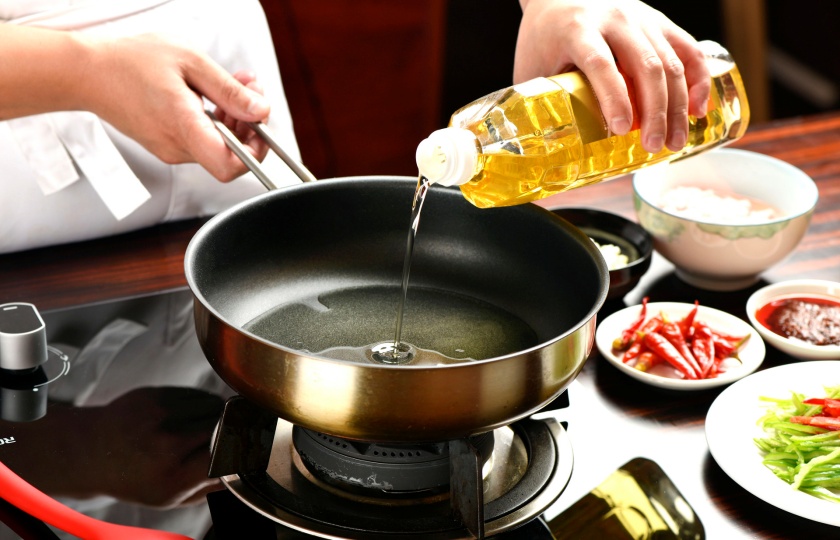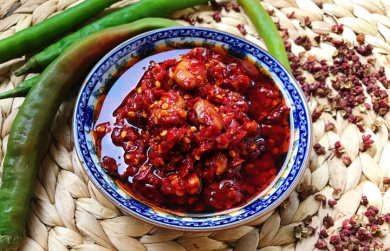Do You Wash a Cast - Iron Skillet? Here's the Answer

Cast iron skillets are a common cooking tool in Chinese kitchens, but many people don’t know how to clean them properly. After reading this article, you'll understand exactly how to take care of your cast iron skillet!
Do You Wash a Cast - Iron Skillet?
Yes, cleaning a cast iron skillet is essential after each use to prevent stains and rust. Here are some key points to keep in mind when cleaning your cast iron skillet:
Cool It Completely Before Cleaning
Don’t rush to clean a hot cast iron skillet. It's best to let it cool naturally before cleaning. Sudden exposure to cold water can not only cause burns but may also damage the skillet’s coating.
Use Hot Water and a Soft Cloth
Avoid using steel wool on your skillet. After soaking it in hot water, gently clean it with a soft cloth. Most grease and residue will come off easily after soaking.
Dealing with Stubborn Stains
If your skillet has stubborn stains, add hot water to the pan and simmer on low heat for a few minutes. Once the burnt stains have softened, use a soft cloth to wipe them off.
Dry and Maintain
After cleaning, make sure to dry your skillet thoroughly. If possible, heat it on low to ensure all moisture evaporates. Finally, apply a thin layer of cooking oil to prevent rust and maintain its shine.
How to Clean a Cast Iron Skillet with Burnt - On?
Baking Soda Method
Make a Paste: Mix baking soda and water in a 1:1 ratio to form a paste.
Apply: Spread the paste evenly over the burn marks and let it sit for 10-15 minutes.
Scrub: Use a soft cloth or sponge to gently scrub away the burnt marks.
Rinse: Rinse with warm water, dry the skillet, and apply a thin layer of oil to prevent rust.

Vinegar Boiling Method
Soak: Fill the skillet with equal parts water and white vinegar, ensuring the burnt areas are submerged.
Heat: Place the skillet on the stove, bring it to a low boil, and simmer for 10-15 minutes.
Scrub: After boiling, gently scrub the burnt areas with a soft cloth or sponge.
Rinse: Rinse with clean water, dry, and apply a thin coat of oil.
Tips
Avoid steel wool as it can damage the skillet’s seasoning.
Regularly maintain your skillet by drying it after each use and applying a thin layer of oil to prevent rust.
How to Clean a Cast Iron Skillet with Salt?
Cleaning your skillet with salt is very simple. Here’s how:
Cool It: Let the skillet cool naturally before cleaning to prevent warping.
Sprinkle Salt: Sprinkle a layer of coarse salt in the skillet. The salt will serve as a mild abrasive.
Scrub: Use a soft cloth or sponge dipped in warm water to gently scrub the burnt areas. Salt will help remove the burn marks without damaging the skillet’s surface.
Rinse: Rinse the skillet with warm water, dry it, and apply a thin layer of oil.
Cast Iron Skillet Care for First Time Use?
Proper maintenance is crucial. Follow these steps:
Before First Use:
Clean the skillet, dry it thoroughly, and apply a thin layer of cooking oil (corn oil or canola oil works best).
Heat the skillet on low until the oil begins to smoke, then turn off the heat and let it cool.
This process creates a natural non-stick layer that helps prevent rusting.

During Use:
Always heat the skillet before adding oil to prevent sticking.
Avoid leaving the skillet empty on high heat for long periods as it can damage the seasoning and cause warping.
Limit the use of acidic ingredients like tomatoes and vinegar, as they can corrode the skillet over time.
After Use:
Once the skillet has cooled, clean it with hot water and a soft cloth or sponge. Avoid using steel wool.
Dry the skillet thoroughly, either with a cloth or by heating it on low.
Apply a thin layer of oil to prevent rust and maintain its shine.
Long-Term Storage Maintenance:
If you’re not using the skillet for an extended period, ensure that it's dry, then apply a thin layer of oil. Store it in a dry, well-ventilated place to prevent rusting.
Tips
Seasoning: If you notice that the non-stick layer is wearing off, you can repeat the initial seasoning process to restore it.
No Long Soaking: Never leave a cast iron skillet submerged in water for too long as it can lead to rusting.
Why Can't You Wash Cast Iron with Soap?
Here’s why:
During use, cast iron skillets develop a natural layer of oil, known as the “seasoning,” which not only prevents rust but also makes the skillet non-stick. Soap is alkaline and can dissolve this seasoning layer, causing it to deteriorate or disappear completely.
Once the seasoning is damaged, the skillet will rust easily, and food will start sticking to it.
If your skillet is particularly dirty, you can use a small amount of mild dish soap, but be sure to reapply oil and heat it to restore the seasoning afterward.
For regular cleaning, hot water and a soft cloth are usually sufficient, or you can use coarse salt to scrub away residue without damaging the skillet.
Do You Have to Oil Cast Iron After Every Use?
Here are the main reasons to oil your cast iron skillet after each use:
Prevent Rust
Cast iron is prone to rusting. If you don’t dry it properly and apply oil after each use, it will rust. A layer of oil helps form a protective barrier that keeps moisture away from the skillet.
Maintain the Non-Stick Surface
Cast iron can be prone to sticking. Oiling it after each use helps maintain its non-stick coating.

Extend the Life of the Skillet
Applying oil helps preserve the skillet's surface, reducing wear and tear, and ensuring that your skillet lasts for many years.
Tips
Oil More in the Beginning: In the early stages of use, apply oil after each use to build up a stable protective layer.
Oil Before Long Storage: If you’re not using the skillet for a while, make sure to oil it and store it in a dry place to prevent rusting.
Don’t Overdo It: Use only a thin layer of oil; too much can leave the skillet feeling greasy next time you use it.























